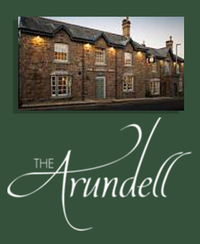Many thanks to The Arundell Hotel for facilitating this camera's location and to the Westcountry Rivers Trust for capitally funding its installation. The Lyd River originates at Lyd Head, specifically Corn Ridge in NW Dartmoor, within the Dartmoor National Park in Devon, located in the southwestern part of England. It flows into the River Tamar beyond Lifton. A notable feature of the Lyd River is Lydford Gorge, situated at Lydford on the outskirts of the National Park. This 1.5-mile-long gorge, located on the River Lyd, is the deepest in South West England. Its formation can be attributed to river capture, a process whereby a nearby river erodes backward until it intersects with the Lyd, diverting its course into a secondary channel.The Arundell has been a welcoming destination for generations of returning families, who are drawn to its enduring sportsmanship and the timeless character that still thrives within the hotel today. The original building, which guests can recognize by its street-side facade, is approximately 250 to 300 years old. It encompasses a section of the lounge, extends to the cocktail bar, and continues along to the Lyd Room and television room. The hotel garden houses a historic feature called the cockpit, now repurposed as the rod and tackle room. This centuries-old structure is believed to be one of the few surviving cockpits in England. While the roof has been renovated over the years, most of the walls remain original. The circular rod rack, enclosing an area with a raised earth mound, was present until around 1970 and served as the fighting arena for cocks. Although cock-fighting became illegal in Victorian times, it persisted in rural areas long after it had ceased in towns. Public opposition to the practice grew due to the use of steel spurs on the birds' legs, which led to shorter fights, increased frequency of matches, and higher betting activities. Among the hotel's early artifacts, visitors can observe a pair of cock-fighting spurs displayed in a glass cupboard near the entrance of the cocktail bar.It is suspected that an inn or ale house existed on the site of the current hotel long before the late 1600s, although no records confirming its existence have been found. The hotel was originally named The White Horse, suggesting potential connections to the Saxons, as the white horse emblem has Saxon origins. Additionally, King Alfred (849-901), one of the most prominent Anglo-Saxon kings, held the title of Lord of the Manor of Lifton. Lifton served as a frontier town during the 7th, 8th, and 9th centuries, acting as a military outpost for the Saxons during their conquests of West Devon and Cornwall. Battles between the Celts and Saxons took place at Lewtrenchard, near Lifton, and at a ford or shallow crossing of the Tamar River, likely close to the present-day Polson Bridge. The name "Tamar" is derived from the Celtic words "Taw Maur," meaning "big water." The memory of the Tamar's role as a river frontier is still preserved in local speech, with many Cornish individuals referring to crossing the Tamar into Devon as going "over the border."
During the medieval period, Lifton held the status of a Royal Manor and was under the jurisdiction of the reigning monarch. It was managed by a member of the royal family or a favored courtier, who retained its revenues. Notable figures associated with the Lordship of the Manor included the Earl of Westmorland and the Fair Maid of Kent, who was the wife of the Black Prince, Duke of Cornwall (1330-1370). However, it is uncertain if either of them ever visited Lifton. The only confirmed royal visitor was King Charles I, who unexpectedly rode up the main street accompanied by his Cavaliers and men-at-arms in July 1644. This occurred during the Civil War when Charles was making a desperate attempt to rally the Royalists of Cornwall against the attacks of the Parliamentary Army led by Essex.







